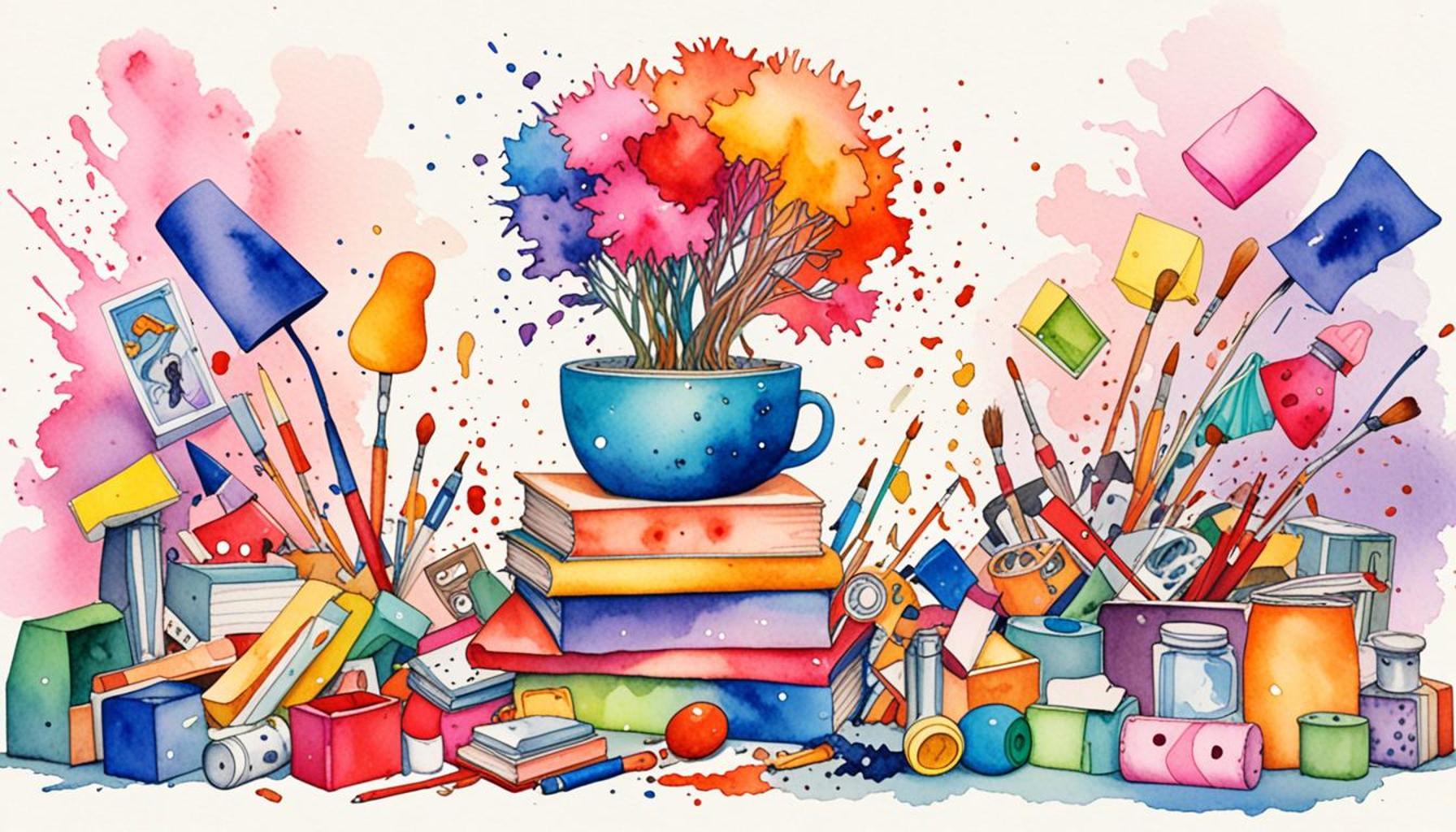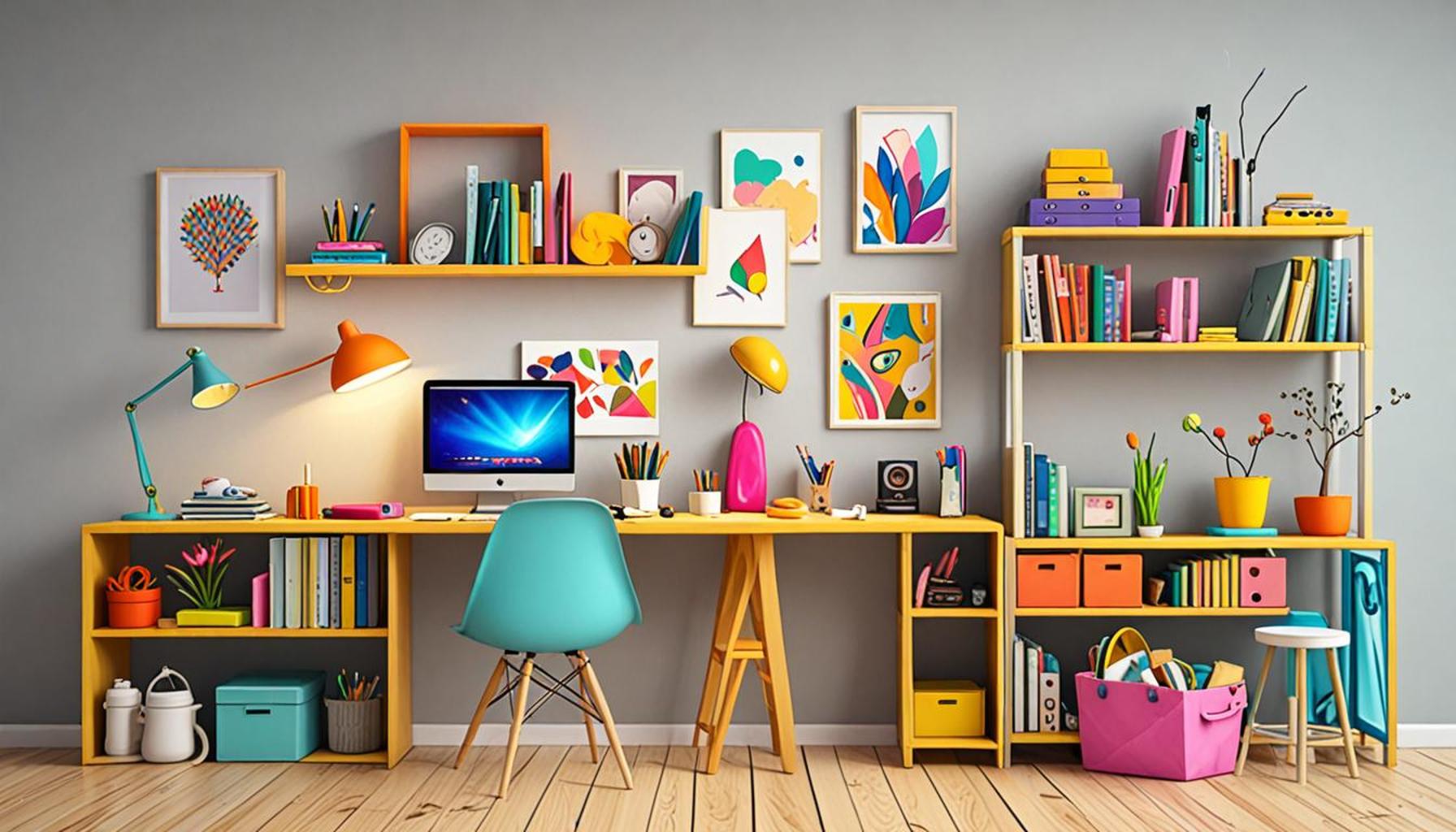The Psychology of Clutter: Understanding Emotional Attachments and How to Let Go

The Emotional Ties to Our Clutter
The relationship we have with our possessions often runs deeper than mere functionality. Emotional attachments to items can lead to significant clutter, affecting mental well-being and creating a sense of chaos in our lives. In fact, studies suggest that the state of our physical environment can strongly influence our mental state, making it crucial to understand how our belongings impact us.
As we accumulate objects, we often cling to memories, experiences, and the past. This attachment can be difficult to navigate, but understanding the psychology behind it is essential. For instance, someone who holds onto gifts from loved ones may be preserving a part of their relationships, while another person might keep old toys that remind them of their childhood. This emotional connection, while often comforting, can lead to overwhelming clutter.
Here are some factors contributing to our emotional connections with belongings:
- Nostalgia: Objects can remind us of special moments or loved ones. A faded photograph, a handwritten letter, or a piece of furniture passed down through generations carries stories and emotions that we often cherish.
- Identity: Our possessions often reflect who we are and how we see ourselves. Fashion choices, books we read, and the decor we choose can all serve as an extension of our identity, representing our beliefs, values, and aspirations.
- Fear of loss: Letting go may feel like losing a piece of our history. This fear can be paralyzing, especially if the items in question evoke bittersweet memories or signify pivotal life experiences.
Recognizing these patterns is the first step towards decluttering. Understanding why we hold onto certain items allows us to make informed decisions about what we truly need in our lives. It’s essential to approach this process with compassion and patience, acknowledging that every item carries a story, a memory, or a feeling.
In the following sections, we will delve into practical strategies for letting go of clutter while addressing the underlying emotional factors. These strategies might include methods such as the “Marie Kondo Method,” focusing on items that “spark joy,” or implementing a “one-in, one-out” rule to prevent further accumulation. Whether you’re overwhelmed by a cluttered space or simply curious about the psychology behind it, this exploration promises to shed light on effective ways to create a more serene environment.

Ultimately, the goal isn’t merely to have a tidy space; it is to cultivate a living area that reflects our values, enhances our well-being, and allows us to move forward with clarity and intention. By understanding our emotional ties to our belongings, we can navigate the decluttering process more effectively, leading to greater peace of mind and a renewed sense of purpose.
DISCOVER MORE: Click here to enhance your productivity
Understanding Our Emotional Attachments to Clutter
Emotional attachments to possessions can create a tangled web of feelings that complicate our relationship with clutter. While many of us see clutter as simply a byproduct of modern living, it often represents much more—it can be symbolic of our past, our fears, and even our aspirations. The items we hold dear can tether us to specific moments in time and give us a sense of identity and belonging, which makes letting go of clutter feel like a daunting task.
To truly grasp the underlying psychology of clutter, we must examine the emotional narratives that often accompany our belongings. From the childhood toy stashed away in the attic to the stack of unread books, each item is imbued with meaning. Here are several common emotional factors that contribute to our reluctance to declutter:
- Memories: Every object can serve as a physical reminder of cherished memories. A wedding dress tucked away in a closet evokes the joy of a special day, while a set of family heirlooms can encapsulate generations of tradition and love.
- Sentimentality: Sentimental value often outweighs the objective utility of an item. Many people find it hard to part with gifts from loved ones, as these items become tangible links to relationships that are meaningful to them.
- Fear of Regret: The anxiety surrounding the question “What if I need this later?” can lead to an overwhelming urge to hold onto items. This fear can immobilize us and lead to indecision, preventing us from moving forward.
- Social Expectations: In a culture that often equates material possessions with success and status, we may feel pressure to retain items as symbols of our achievements or aspirations.
Acknowledging these emotional attachments is crucial for anyone looking to navigate the path to decluttering. By understanding the narrative behind why we cling to specific items, we can embrace a more constructive and compassionate approach to the decluttering process. This introspective journey allows us to ask vital questions, such as: “Does this item truly contribute to my happiness?” or “What does this object represent in my life?”
In the quest to unravel the emotional ties to clutter, self-compassion becomes a key element. Rather than viewing the act of letting go as a failure, reframing it as a step toward personal growth can facilitate change. Engaging in dialogues about our belongings can spark insights into how our environments align with our values and aspirations.
As we delve deeper into the impact of our cluttered spaces, we will explore effective strategies that resonate with our psychological needs. These approaches not only promise to clear out physical spaces but also offer transformative mental liberation. Preparing to let go is about understanding, honoring, and, ultimately, embracing the new possibilities that await beyond our cluttered confines.
The Psychology of Clutter: Understanding Emotional Attachments and How to Let Go
When we talk about clutter, it’s essential to delve into the emotional connections we often form with our belongings. These attachments can stem from various factors, including nostalgia, fear of loss, and even societal pressures. Understanding these underlying emotions is crucial in tackling clutter effectively. For many, it’s not just about physical objects but emotional safety. We may hold onto items that remind us of significant life events, relationships, or milestones, believing they provide comfort or identity.
Moreover, research suggests that our living environments can directly influence our mental health. Cluttered spaces can lead to increased anxiety and stress levels, creating a cycle of negativity. This revelation leads us to acknowledge that letting go of possessions may indeed be a pathway to liberation and mental clarity. But how does one begin this emotional journey?
| Emotional Attachments | Ways to Let Go |
|---|---|
| Strong Memories | Reflect on the importance of the item vs. enabling healthy memories. |
| Fear of Loss | Evaluate the value of the item—can it exist in memory alone? |
| Identity Reflection | Identify who you wish to be, not just who you were. |
In recognizing these emotional dimensions, individuals might explore self-help strategies or seek professional help, which can provide tools for letting go. Whether through mindfulness practices, decluttering workshops, or professional organizing services, each step towards simplifying one’s environment has profound potential, translating into a sense of peace and clarity that transcends the objects themselves. Understanding the psychology behind clutter leads us toward a future living space that not only symbolizes freedom but also enhances overall well-being.
DISCOVER MORE: Click here to unlock the secrets of effective delegation
Transformative Strategies for Letting Go of Clutter
Once we come to terms with our emotional attachments to clutter, the next step is to explore transformative strategies that allow us to let go with intention and purpose. The process of decluttering is not merely about ridding our spaces of excess items; it requires a mindful, often cathartic journey that honors both our past and our future aspirations.
1. The Power of Visualization: A powerful tool in the decluttering process is visualization. Before beginning to sort through your belongings, take a moment to visualize your ideal living space. What does it look like? How do you feel in that space? By engaging in this mental exercise, you create a compelling contrast with your current environment. This can serve as a motivating factor to release items that do not contribute to this envisioned space.
2. Prioritize Your Sentiment: While sentimentality plays a pivotal role in our attachment to possessions, it’s essential to prioritize what truly holds meaning. One effective method is to create a “memory box” for sentimental items. Limit yourself to a specific size, compelling you to select only those items that hold the most cherished memories. This approach helps maintain a tangible memory while preventing overwhelming clutter.
3. The “Two-Year Rule”: Many experts recommend the two-year rule, which posits that if you haven’t used or appreciated an item in the past two years, it is likely time to let it go. This rule can alleviate the anxiety associated with holding onto items for potential future use and empowers individuals to make objective decisions about their belongings.
4. The “One In, One Out” Principle: Incorporating the “one in, one out” principle into your lifestyle can prevent the accumulation of clutter. For every new item you bring into your home, consciously let go of an equal number of items. This not only keeps belongings manageable but also cultivates mindfulness about future purchases.
5. Seek Support: The journey to decluttering can be emotionally charged and challenging to navigate alone. Surround yourself with supportive friends, family members, or even consider hiring a professional organizer. Having someone to share your emotions and decision-making process can provide accountability and encouragement, making it easier to confront those difficult attachments.
6. Reflective Journaling: Harnessing the power of reflective journaling can enhance your decluttering process. As you sift through your possessions, write down your thoughts and feelings about each item. Questions such as “What does this item represent to me?” or “How does it serve my current life?” can lead to deeper insights and a greater understanding of what to discard. Journaling allows you to externalize internal conflicts, rendering them easier to address.
7. Celebrate Small Wins: Decluttering can feel overwhelming, so it’s crucial to celebrate small victories. Whether you complete one room, a closet, or even just a drawer, acknowledge the effort you’ve put in. Rewarding yourself for these accomplishments, whether with a small treat or time for relaxation, fosters a positive association with the decluttering process.
By integrating these strategies into your decluttering journey, the task becomes less about losing cherished items and more about gaining space for new opportunities, fresh experiences, and a lifestyle that aligns with your values and aspirations. With each item released, you create room not just in your physical environment but also within your emotional landscape, paving the way for rejuvenation and clarity.
DON’T MISS: Click here for seasonal decluttering tips
Conclusion
In navigating the intricate relationship between emotional attachments and clutter, it’s crucial to acknowledge that the journey of decluttering is fundamentally a journey of self-discovery. As we explore the psychology of clutter, we learn that our possessions often serve as extensions of our identities, housing memories and aspirations that can be difficult to release. However, by integrating mindful strategies into the decluttering process, we can transform the task from a daunting chore into an empowering experience.
The key lies in confronting emotional ties and recognizing which items truly enrich our lives versus those that merely weigh us down. Techniques such as visualization, the two-year rule, and reflective journaling are not just practical methods; they are pathways to unlocking a greater understanding of ourselves and our values. Each decision to let go serves as an act of intention, ultimately crafting a space that aligns more closely with who we are and who we wish to become.
Moreover, decluttering is not merely an act of cleansing physical space but also of prioritizing mental clarity and emotional well-being. As we celebrate small victories along the way, we cultivate a healthier relationship with our belongings, paving the way for new opportunities, positive energy, and a refreshed outlook on life. In embracing the principles discussed, readers are encouraged to view clutter not just as a physical burden, but as a mirror reflecting their inner world, allowing for an enriching process of letting go. The journey of decluttering may well lead you to discover not only a more organized space but also a liberated self, making room for all the possibilities that lie ahead.


